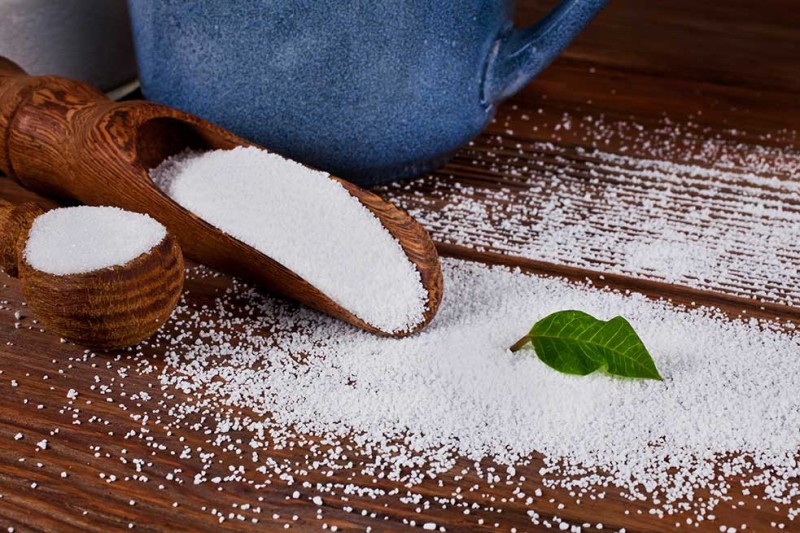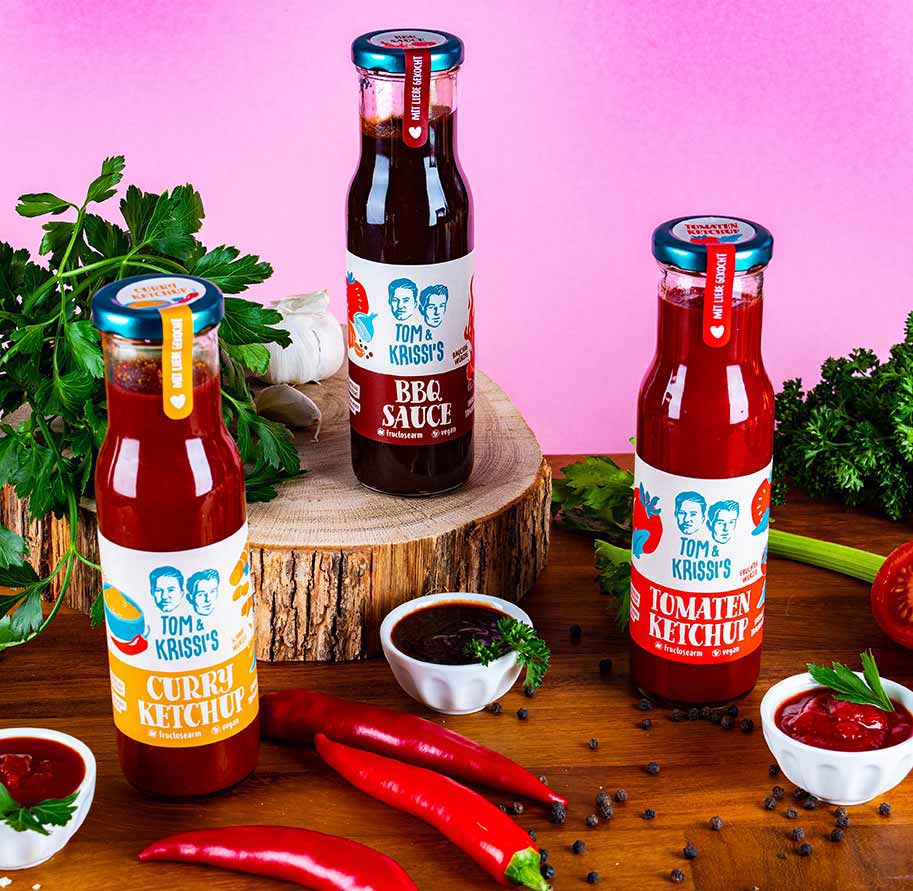Sorbitol intolerance
Table of Contents

Sorbitol Intolerance
In sorbitol intolerance, the intake of the sugar alcohol sorbitol is impaired, leading to digestive discomfort when sorbitol is consumed. Sorbitol intolerance often occurs in combination with fructose intolerance or lactose intolerance. Even individuals who only suffer from fructose intolerance usually have a sorbitol issue, as sorbitol is converted to fructose in the body. For this reason, the products of Tom & Krissi’s are mostly sorbitol-free, with a few exceptions. Since some fruits naturally contain sorbitol, a few fruit spreads contain a small amount of sorbitol.
What is Sorbitol?
Sorbitol is a sugar alcohol commonly used as a humectant in foods or as a sugar substitute in beverages because it is sweet but contains very few calories. As a humectant, sorbitol is used, for example, in pastries or various chocolate products. As a sugar substitute, it is mainly used in diet products. Many diabetics opt for sorbitol-sweetened foods because the body metabolizes sorbitol without insulin. Finally, sorbitol is also used in toothpaste or chewing gum because it does not cause cavities and has a cooling effect on the tongue. Sorbitol is also used in pharmaceutical and cosmetic products.
Symptoms
The amount of sorbitol intake that causes problems for a person with sorbitol intolerance varies depending on individual tolerance. While some individuals report symptoms with very small amounts, such as 5 grams per day, others can consume significantly larger amounts without problems. Each affected person should therefore determine their own tolerance threshold through cautious experimentation.
However, at a certain intake level, sorbitol becomes intolerable for everyone, as larger amounts of sorbitol have a laxative effect. This is because the absorption capacity for this sugar alcohol in the small intestine is limited.
Typical symptoms include:
- Diarrhea
- Flatulence
- Abdominal pain
- Belching
- Nausea
Diagnosis
Similar to fructose intolerance, sorbitol intolerance is diagnosed using an H2 breath test by a gastroenterologist to determine if there is an intolerance to sorbitol. In this test, the patient drinks a sorbitol solution, and then the hydrogen concentration, which indicates sorbitol intolerance when elevated, can be measured in the exhaled air.
Diet for Sorbitol Intolerance
Complete healing from sorbitol intolerance is unfortunately not possible. Individuals suffering from this intolerance should therefore adjust their eating habits and minimize or reduce sorbitol consumption as much as possible. It is best to initially completely avoid sorbitol, as with fructose intolerance, for several weeks. After this period of abstinence of two to four weeks, sorbitol consumption can be slowly and cautiously reintroduced. This helps determine one's own tolerance threshold to enjoy food without discomfort in the future. Most Tom & Krissi’s products are sorbitol-free and can help keep sorbitol consumption permanently low.
Sorbitol is mainly found in fruits. Here is a brief overview without claiming to be exhaustive:
- Pears
- Peaches
- Apples
- Plums
- Apricots
- In many fruits, the sorbitol content is so low that only traces can be detected in finished products such as jam, which should not cause problems for sorbitol intolerance sufferers.

